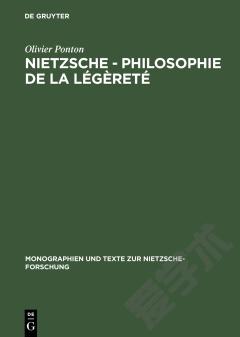Nietzsche's Philosophy of Art
This is a clear and lucid account of Nietzsche's philosophy of art, combining exegesis, interpretation and criticism in a judicious balance. Julian Young argues that Nietzsche's thought about art can only be understood in the context of his wider philosophy. In particular, he discusses the dramatic changes in Nietzschean aesthetics against the background of the celebrated themes of the death of God, eternal recurrence, and the idea of the Übermensch. Young then divides Nietzsche's career and his philosophy of art into four distinct phases, but suggests that these phases describe a circle. An attempt at world-affirmation is made in the central phases, but Nietzsche is predominantly influenced at the beginning and end of his career by a Schopenhauerian pessimism. At the beginning and end art is important because it 'redeems' us from life.
{{comment.content}}








 京公网安备 11010802027623号
京公网安备 11010802027623号